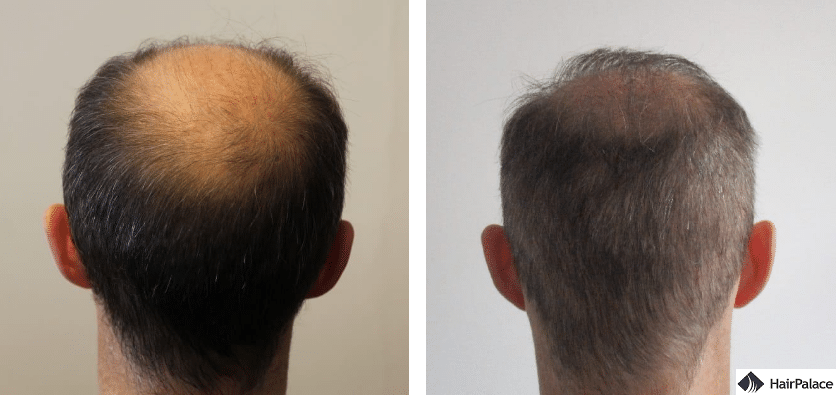Tom’s Two Hair Transplant Sessions

Tom contacted us back in 2017, and he was looking to go ahead with his hair transplant as soon as possible.
In the past two years, he had two hair transplant sessions at our clinic.
In this post, we would like to detail why the two procedures were necessary and how they went.
Also, you might find a few useful tips that can help you prepare for your own hair transplant!
Before the hair restoration
The first step before the hair transplant is the examination so we can draw up a detailed treatment plan.
In Tom’s case, we did the evaluation online, based on the photos he sent us:
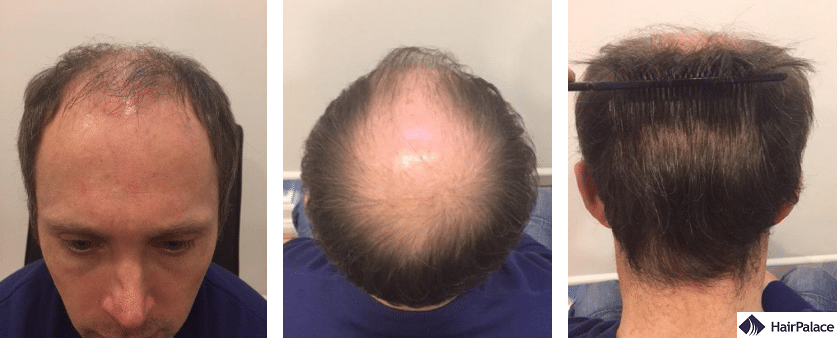
Based on his pictures we could tell that in one session we can cover only about half of the area.
As the donor seemed all right, we could also inform Tom that a second hair transplant session is possible later on with a smaller number of hairs.
We can determine the number of hairs based on photos, but patients are requested to provide a couple more details before the surgery.
- Health questionnaire
Though the hair transplant is non-invasive, it is a surgical procedure nonetheless. It involves long hours and a considerable amount of medication.
For the safety of the patient, we have to be aware of any medical conditions, allergies and medication. Thus the patients have to answer a few questions about their health.
- Blood tests
Before the surgery, we require a recent blood report too.
It is necessary to ensure that there are no contraindications and enables us to adjust the medication we use – if needed.
Naturally, health issues and skin problems affecting the scalp must be resolved before the hair transplant.
But usually, there are only a few minor things to do in preparation for the surgery.
We always recommend arranging a couple of days off to have some time to rest after the treatment.
Also, for the surgery days, it is good to pack button-ups, full zip sweaters, or a loose T-shirt.
With pullovers, T-shirts with tight necks, it is easy to pull out the freshly implanted hairs.
A travel pillow or U-shaped neck pillow can help you sleep more comfortably in the first days after.
First surgery
We carried out Tom’s first hair transplant on the 18-19th of May 2017.
In this 2-day session, I could extract 4402 hairs from his donor area.
I implanted 3000 hairs to Zone 1 to build out the hairline and continued with 1402 hairs to Zone 2.
You may take a look at the size of the area we could cover in Tom’s case:
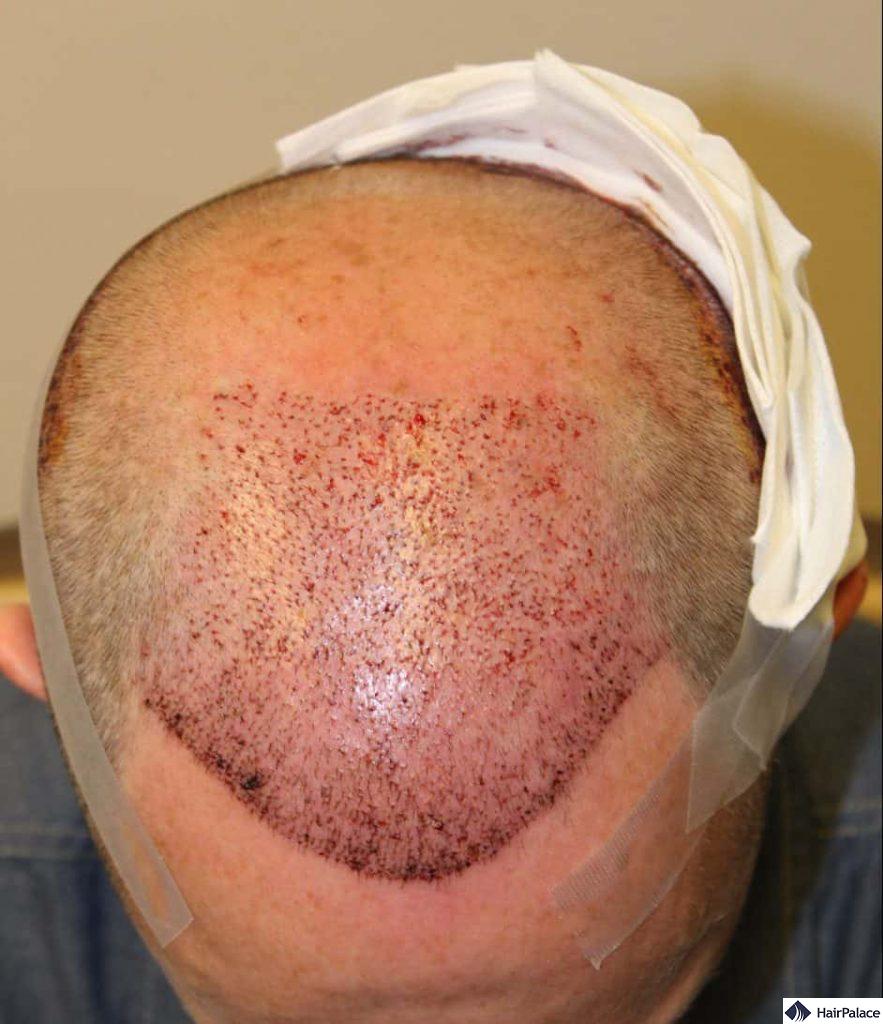
Seeing the post-op photos, many people think that the surgery is painful and the implanted area will be sore afterwards.
In reality, patients will not be in pain either during, nor after the procedure.
The entire procedure is carried out in local anaesthesia.
The first few injections are a bit uncomfortable, but after the lidocaine numbs the area, there is no pain.
Tom himself commented on the pain levels he experienced as follows:
“In terms of pain (10 being really painful 0 being no pain) initial injections a 3 which lasts about 30secs.
Procedure honestly 0 no pain and I actually fell asleep during the extraction which take just over 2 hours.
Similar pain ratings for implantation and this time u are sitting up watching a movie of your choice.
Traveling back through airport was a lot more relaxed than I initially thought it would be, people get on about their business and don’t care.”
The post-op period
After the surgery, the healing and new hair growth take months, and there are slight differences in each.
The sensitivity of the skin, the size of the implanted area and the number of hairs affect how long the healing process takes.
Let’s take a look at the general timeline:
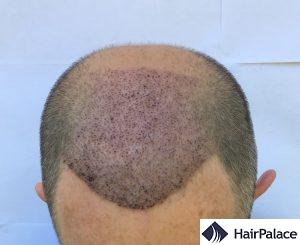
1st week – the tiny wounds close up.
Antibiotics must be taken and a sterile saline solution must be used to prevent any infections.
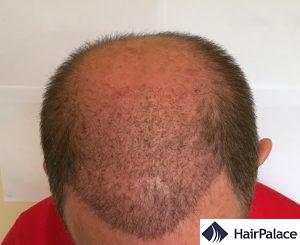
2nd-3rd week – the scabs disappear and the redness starts to fade.
Patients can start using lukewarm tap water to soak the scalp.
Then, from the 3rd week, they can use baby shampoo to clean the scalp and the hairs.
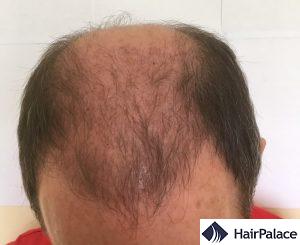
3rd week -3rd month – the implanted hairs fall out.
Any remaining redness disappears.
Patients can return to using their normal shampoo and hair products.
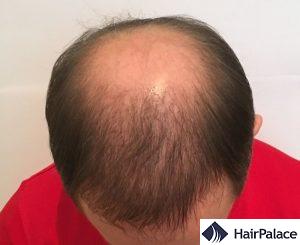
4th –6th month – the new hair growth starts.
Around 50% of the implanted hairs grow out by the 6th month.
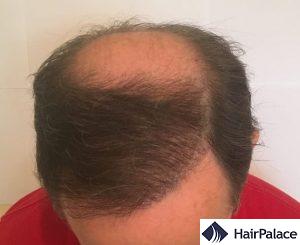
1 year – the result is complete.
As the new hairs continue to grow out, the density gradually increases in the implanted area.
The final result is visible 12-15 months after the surgery.
As we can see on Tom’s 1-year check-up photo above, the hairs grew out in an exceptional percentage – his hairline was natural looking and the density was high in Zones 1 and 2.
As he was looking to get a second hair transplant session, I also created a new treatment plan for him.
Based on his previous hair transplant and his latest photos, I estimated that his donor area would allow around 2000 hairs.
But as the crown area is relatively large, with this amount we would not be able to achieve full density.
Second surgery
I carried out Tom’s second hair transplant on the 13th of July 2018.
Luckily, his donor area allowed me to go above my initial estimation and extract 2581 hairs in total.
In this second hair transplant session, I implanted the hairs mainly to Zone 3, merging the area with the previously implanted Zone 2:
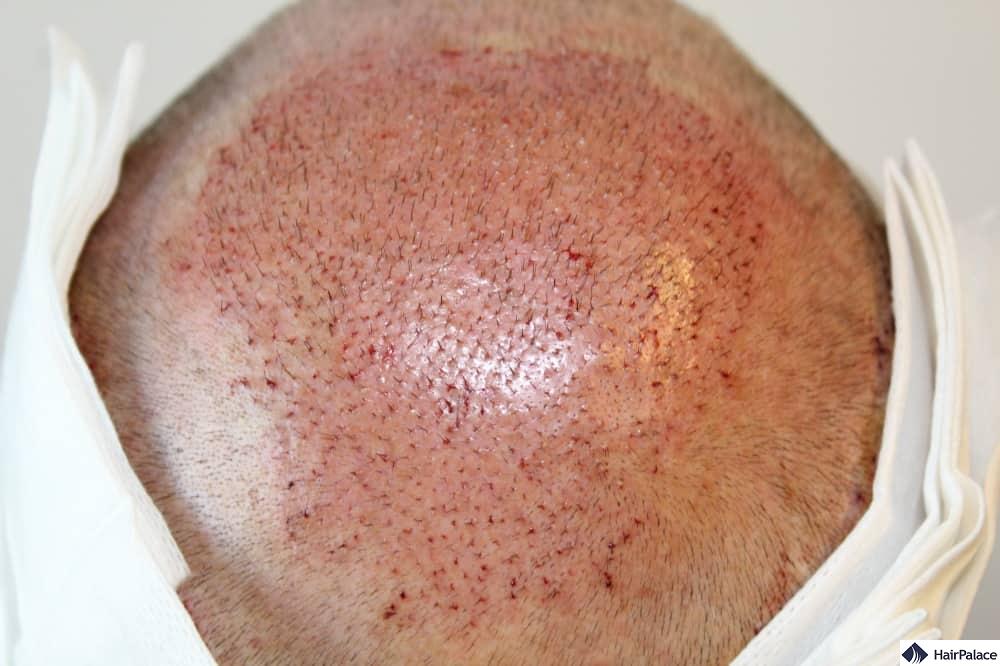
The post-surgical healing and growth process went just like a year before.
After the implanted hairs anchored in, the strands fell out.
Then, from the 4th month, new hairs started to grow and the density gradually improved.
Tom attended his final check-up in our Dublin office on the 16th of July 2019.
Just like a year or so before, I found that the hairs have grown out in excellent percentage.
Considering the size of the crown area, I was satisfied with the coverage that the 2581 hairs provided.
Let’s take a look at Tom’s photos before and after his two hair transplant sessions, side by side:
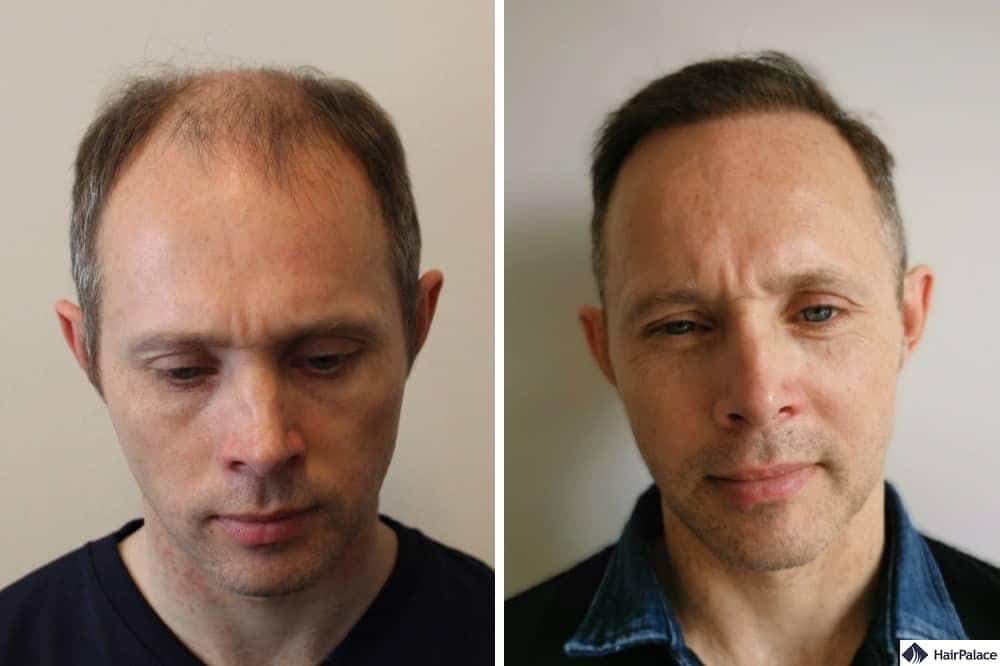
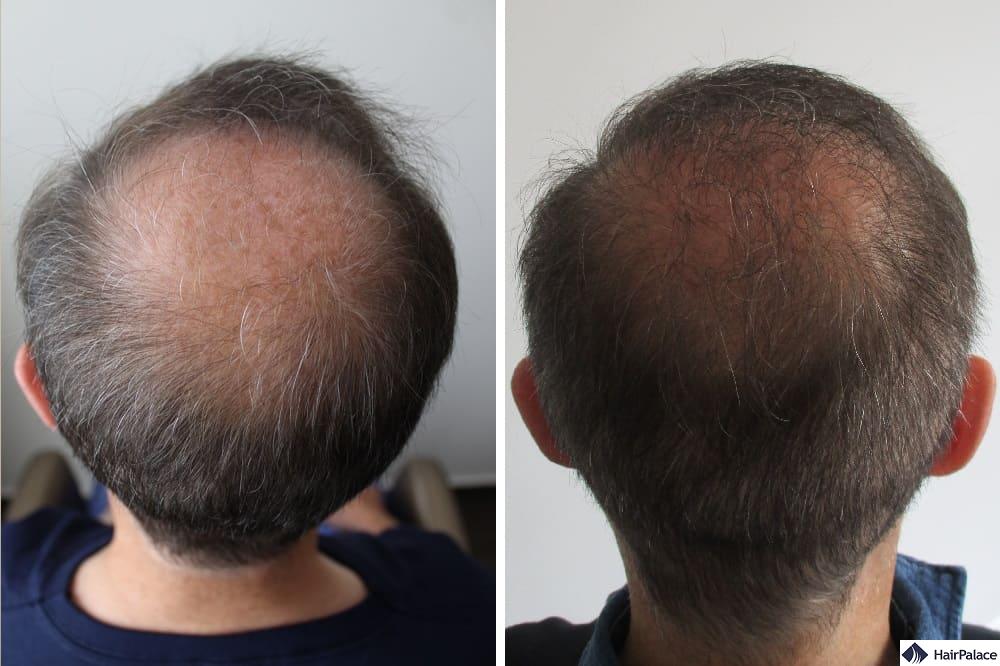
Donor area
Talking about multi-session surgeries, we must mention the donor area too.
The size and density of the donor area vary patient by patient, and as such, the limit of the donor area differs.
Some patients can have 4-5 hair transplant sessions with a gradually decreasing number of hairs, of course.
However, in other cases, the donor area might allow a single hair transplant with 3-4000 hairs only.
During the extraction, we use the whole expanse of the donor area and harvest the hairs evenly.
As a result, we can prevent creating thinner patches or empty areas in the donor zone.
However, its overall density will be lower and lower with each procedure.
Tom had 6983 hairs extracted in two hair transplant sessions.
In his case, the density on the donor area changed like so:
